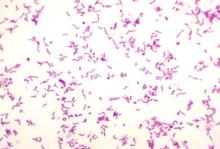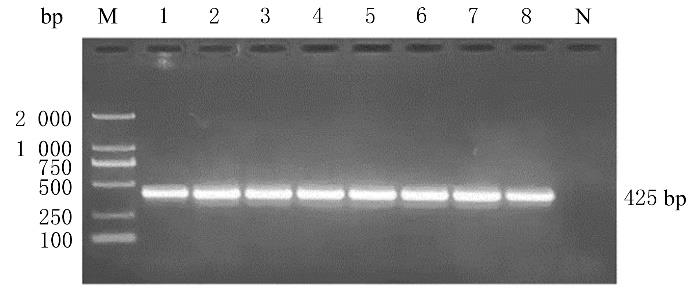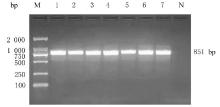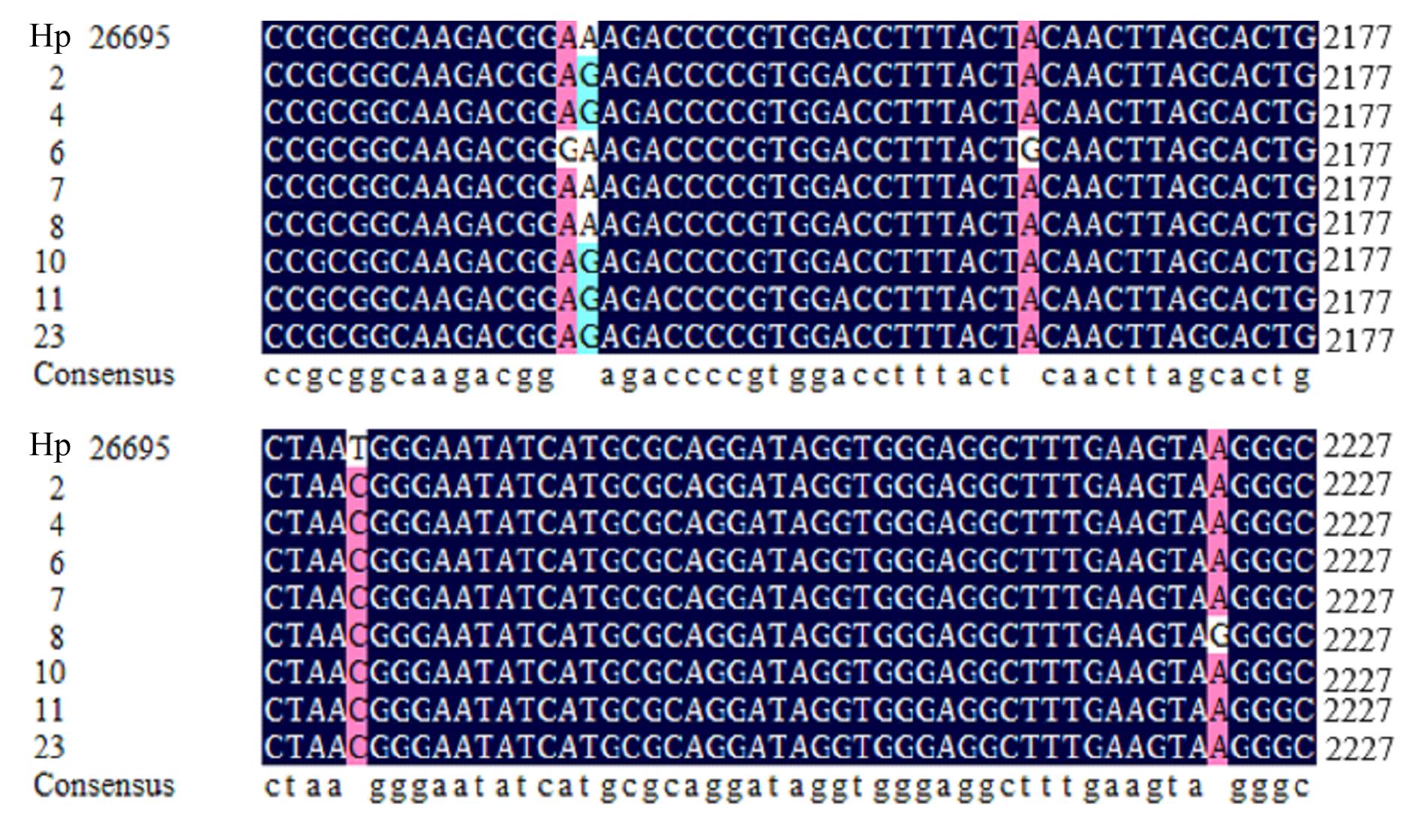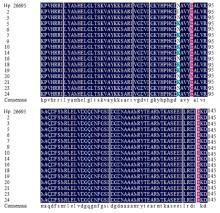| 1 |
KAO C Y, SHEU B S, WU J J. Helicobacter pylori infection: an overview of bacterial virulence factors and pathogenesis[J]. Biomed J, 2016, 39(1): 14-23.
|
| 2 |
BEHESHTIROUY S, EYVAZI S, TARHRIZ V. Evaluation of mutations in 23S rRNA, rdxA and frxA genes of Helicobacter pylori in paraffin-embedded gastric biopsy specimens from Iranian gastric cancer and gastritis patients[J].J Gastrointest Cancer,2021,52(1): 207-211.
|
| 3 |
NAGY P, JOHANSSON S, MOLLOY-BLAND M. Systematic review of time trends in the prevalence of Helicobacter pylori infection in China and the USA[J]. Gut Pathog, 2016, 8: 8.
|
| 4 |
ARSLAN N, YıLMAZ Ö, DEMIRAY-GÜRBÜZ E. Importance of antimicrobial susceptibility testing for the management of eradication in Helicobacter pylori infection[J]. World J Gastroenterol, 2017, 23(16): 2854-2869.
|
| 5 |
GRAHAM D Y, FISCHBACH L. Helicobacter pylori treatment in the era of increasing antibiotic resistance[J]. Gut, 2010, 59(8): 1143-1153.
|
| 6 |
BOYANOVA L, HADZHIYSKI P, KANDILAROV N,et al. Multidrug resistance in Helicobacter pylori: current state and future directions[J]. Expert Rev Clin Pharmacol, 2019, 12(9): 909-915.
|
| 7 |
BLŃKOWSKA A, BIERNAT M M, ŁACZMANSKI Ł,et al. Molecular patterns of resistance among Helicobacter pylori strains in south-western Poland[J]. Front Microbiol, 2018, 9: 3154.
|
| 8 |
林依依.福建地区幽门螺旋杆菌对常用抗生素耐药性研究及现行根除方案疗效评估[D].福州:福建医科大学,2017.
|
| 9 |
COSME A, TORRENTE IRANZO S, MONTES- ROS M, et al. Helicobacter pylori antimicrobial resistance during a 5-year period (2013-2017) in northern Spain and its relationship with the eradication therapies[J]. Helicobacter, 2019, 24(1): e12557.
|
| 10 |
庄少华, 付金金, 饶 君. 炎症性肠病患者幽门螺杆菌感染情况及耐药性分析[J]. 中华医院感染学杂志, 2020, 30(7): 1016-1020.
|
| 11 |
ZAMANI M, EBRAHIMTABAR F, ZAMANI V,et al.Systematic review with meta-analysis: the worldwide prevalence of Helicobacter pylori infection[J]. Aliment Pharmacol Ther, 2018, 47(7): 868-876.
|
| 12 |
LIU J, WANG Y H, ZHAO Q H, et al. Prevalence and risk factors for Helicobacter pylori infection in southwest China: a study of health examination participants based on 13C-urea breath test[J]. Turk J Med Sci, 2017, 47(5): 1456-1462.
|
| 13 |
CHOE J W, JUNG S W, KIM S Y, et al. Comparative study of Helicobacter pylori eradication rates of concomitant therapy vs modified quadruple therapy comprising proton-pump inhibitor, bismuth, amoxicillin, and metronidazole in Korea[J]. Helicobacter, 2018, 23(2): e12466.
|
| 14 |
MEGRAUD F, COENEN S, VERSPORTEN A,et al. Helicobacter pylori resistance to antibiotics in Europe and its relationship to antibiotic consumption[J]. Gut, 2013, 62(1): 34-42.
|
| 15 |
LIU W Z, XIE Y, LU H, et al. Fifth Chinese National Consensus Report on the management of Helicobacter pylori infection[J]. Helicobacter, 2018, 23(2): e12475.
|
| 16 |
ZHANG Y X, ZHOU L Y, SONG Z Q, et al. Primary antibiotic resistance of Helicobacter pylori strains isolated from patients with dyspeptic symptoms in Beijing: a prospective serial study[J]. World J Gastroenterol, 2015, 21(9): 2786-2792.
|
| 17 |
HASHEMI S J, SHEIKH A F, GOODARZI H, et al. Genetic basis for metronidazole and clarithromycin resistance in Helicobacter pylori strains isolated from patients with gastroduodenal disorders[J]. Infect Drug Resist, 2019, 12: 535-543.
|
| 18 |
CALISKAN R, TOKMAN H B, ERZIN Y, et al. Antimicrobial resistance of Helicobacter pylori strains to five antibiotics, including levofloxacin, in Northwestern Turkey[J].Rev Soc Bras Med Trop,2015,48(3): 278-284.
|
| 19 |
KIM K S, KANG J O, EUN C S, et al. Mutations in the 23S rRNA gene of Helicobacter pylori associated with clarithromycin resistance[J]. J Korean Med Sci, 2002, 17(5): 599-603.
|
| 20 |
YOON K H, PARK S W, LEE S W, et al. Clarithromycin-based standard triple therapy can still be effective for Helicobacter pylori eradication in some parts of the Korea[J]. J Korean Med Sci, 2014, 29(9): 1240-1246.
|
| 21 |
RASHEED F, CAMPBELL B J, ALFIZAH H, et al. Analysis of clinical isolates of Helicobacter pylori in Pakistan reveals high degrees of pathogenicity and high frequencies of antibiotic resistance[J]. Helicobacter, 2014, 19(5): 387-399.
|
| 22 |
HANSOMBURANA P, ANANTAPANPONG S, SIRINTHORNPUNYA S, et al. Prevalence of single nucleotide mutation in clarithromycin resistant gene of Helicobacter pylori: a 32-months prospective study by using hybridization real time polymerase chain reaction[J]. J Med Assoc Thai, 2012, 95(): S28-S35.
|
| 23 |
SOLCÀ N M, BERNASCONI M V, PIFFARETTI J C.Mechanism of metronidazole resistance in Helicobacter pylori: comparison of the rdxA gene sequences in 30 strains[J]. Antimicrob Agents Chemother,2000,44(8): 2207-2210.
|
| 24 |
MIFTAHUSSURUR M, SHRESTHA P K, SUBSOMWONG P, et al. Emerging Helicobacter pylori levofloxacin resistance and novel genetic mutation in Nepal[J]. BMC Microbiol, 2016, 16(1): 256.
|
| 25 |
TSHIBANGU-KABAMBA E, YAMAOKA Y. Helicobacter pylori infection and antibiotic resistance- from biology to clinical implications[J]. Nat Rev Gastroenterol Hepatol, 2021, 18(9): 613-629.
|
| 26 |
TRESPALACIOS-RANGÉL A A, OTERO W, ARÉVALO-GALVIS A, et al. Surveillance of levofloxacin resistance in Helicobacter pylori isolates in bogotá-Colombia (2009-2014)[J]. PLoS One, 2016, 11(7): e0160007.
|
| 27 |
WANG L H, CHENG H, HU F L, et al. Distribution of gyrA mutations in fluoroquinolone-resistant Helicobacter pylori strains[J]. World J Gastroenterol, 2010, 16(18): 2272-2277.
|
| 28 |
GONG Y H, YUAN Y. Resistance mechanisms of Helicobacter pylori and its dual target precise therapy[J]. Crit Rev Microbiol, 2018, 44(3): 371-392.
|
 ),赵云冬1(
),赵云冬1( )
)
 ),Yundong ZHAO1(
),Yundong ZHAO1( )
)


